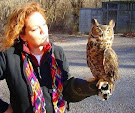One veterinarian’s view:
When starting this conversation, one of the first terms to define is what kind of cat you are talking about. A feral cat is one that is truly “wild,” unowned and living without any, or with very limited, human intervention. Then, there are stray cats, also unowned, but supported in part by people. These include the public cat colonies fed by well-meaning cat lovers and the stray that shows up in your yard from time to time, looking for a handout. Finally, there are owned cats, some of which might be called “barn cats,” owned, fed and casually cared for, but never coming indoors, and pet cats who live mostly indoors, but are allowed some outdoor time as part of their daily routine. Management styles must be modified based on what kind of cat problem you are addressing.
Feral cats actually make up the smallest portion of the cat population. Due to the rigors of their lifestyle, their lifespan is short, approximately 2 years. Poor nutrition means their reproductive rate is low. Without supplemental feeding, litter numbers are small and few kittens survive to adulthood.
Subsidized cat colonies may consist of dozens or even hundreds of cats. Well-meaning but uninformed people who provide food for these cats contribute to the problem by improving the cats’ nutrition, thus increasing their fecundity. The concentration of large numbers of cats in a small area increases the fecal pollution, and raises the risk of zoonotic disease. Cats using park lands or sandboxes put people, especially children, at risk for roundworms (which can cause blindness or neurologic disease) and toxoplasmosis, a cause of human birth defects. Colonies are often in sheltered areas, and the security and reliable food source attracts new feline members. Irresponsible pet owners may dump their unwanted kittens in the vicinity, assuming “someone will care for them.”
Owned cats are the unseen fly in the ointment. Pet owners may believe that their well-fed cat has no need to hunt, but the predatory instinct of a feline will not be denied. Even if not hungry, cats will take and kill birds, small mammals, snakes and frogs.
Leash laws can be enacted for owned cats, but won’t control the feral or stray cat, and would be extremely difficult to police in rural areas, where a good mouser is prized. Colony caretakers won’t tolerate any policy that involves killing their beloved charges. Trapping and removing all cats and kittens allows new strays move into the void, perpetuating the colony. TNR, Trap/Neuter/Release, has been advocated by cat lovers, as it establishes stable and non-reproducing colonies, but doesn’t answer the question of wildlife decimation.
So, what is the answer? The truth is, no one answer fits all the situations. Feral cats are not good candidates for adoption. Trap/Remove might work for feral cats which are in areas where people don’t have proprietary emotional ties to them. TNR of public cat colonies, with adoption of kittens and tame adults, and returning sterilized adults to the colony, is currently the accepted option where public outcry makes removal politically unacceptable. Educating the public is critical for controlling the pet cat population, with a big emphasis on spay and neuter to decrease the ever-burgeoning overpopulation problem.

3 comments:
I quite agree: education is key. It's rather amazing the number of homeless cats we have in this country.
G'day SGN,
Just forget how I came across your blog. Anyway, good work.
We have the same issues down here in Oz. Education and enforcement would have to be the key I reckon.
Education is easy enough, but it has to be persistent and consistent.
Enforcement, down here anyway, has a resources/finance component attached - somebody has to be paid to do it.
Where I live, there is a wonderful little wetlands right on the edge of town. The community effort to restore this area has been extroadinary, and everyone is particularly proud of the result. But, what happens? Locals walk their dogs off lead and even encourage them to swim after the waterbirds! I see domestic/feral cats in the reed beds nearly every time I go there. There are signs everywhere, notices in the local press, etc largely ignored. Hit them in the back pocket I reckon.
As usual, it's a people problem, not a cat/dog problem.
Regards,
Gouldiae.
kaloki crack
atclock 1.2 crack
athan pro 2.1 crack
ability ftp server crack
l edit crack
dvd cutter crack
easy video splitter 2.01 serial crack
aladdin hardlock crack
fat cat poker crack
kaspersky antivirus key crack
download accelerator plus v7.4.0.0 crack
teleport pro download crack
supervoice pro 6 keygen
prodad crack
raven shield 3 keygen
font creator 5 crack serial
vcd cutter crack
fast lanes bowling demo crack
nero cd keygen
web position gold crack serial
Post a Comment